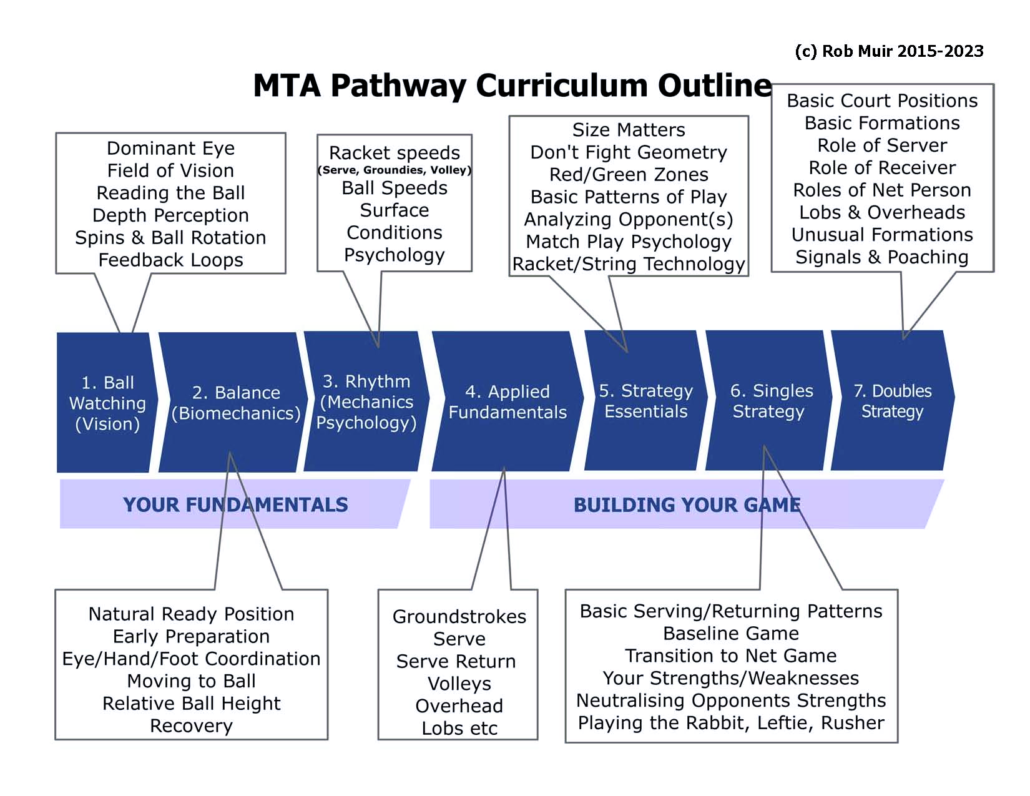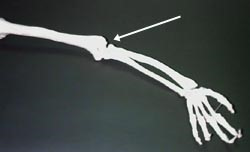USPTA Quick Tip: Soft Hands on Volleys | AskThePro
Rob, USPTA Pro
Tennis Whisperer
Rob, USPTA Pro
Tennis Whisperer
Sam Stosur and Nick Kyrgios have some new friends in Naomi Osaka (French Open) and gymnast Simone Biles (Olympics). Athletes who think that they have failed to live up to expectations—whether it be parents, peer group, coach or media.
Regrettably media these days have jumped on the band wagon wanting to label it as “mental illness”.�It’s not, it never was.
Competitive sports put athletes under pressure to perform. And any major championship increases the pressure exponentially.
My good Scottish friend, Johnson Brown, put it succinctly: “you’ve got to ask the question”.�What Johnson meant was to give your opposition a chance to miss. Equally,�you are often asking the same question of yourself.
On a personal note I well remember scouting an opponent with my coach before a major championship final. Says the well meaning coach — “The guy can’t play, you’ll have no problem…”.�Fast forward to next day’s final. There’s a big crowd. It’s 5 all in the third set! Enter my demon: “the guy can’t play” — not a subtle message demon —clearly I can’t play either!!�And I, and the crowd, know it!�Or that’s what my demon wants me to believe.
Choking, jitters, twisties and baulks in major competitions are part of the game. It happens to all athletes from time to time.�We all succumb at some point, under pressure — and particularly when the competition is beyond our level of experience.�It’s very difficult to win a Grand Slam and particularly at your first go. Closer to home recall Bosko playing Rimmo in the club singles final.�Bosko confided he knew what to do but couldn’t execute on the day against a more experienced player.
Quoting Olympic gold medal-winning rower Kim Brennan:�“Everyone has their angel and demon sitting on their shoulder,” she says. “The demon is always going to be there. You train yourself to accept that everyone’s got them. I bet Ariarne Titmus has her demons. But you get comfortable with it. You say, “Hi old friend, I knew you were coming. That’s nice. But I’m going to keep doing what I’ve trained myself to do’.”
Therein lies part of the answer (training/process) about how to handle competitive pressure.
Research shows us that our minds contain two systems. The first acts instinctively and requires little effort — it’s based on our evolutionary fight or flight tendencies—and easily fueled by our demon.�The second (our angel) is more deliberate and requires much more of our attention.
Our thoughts and actions vary depending on which of the two systems is in control of our brain at the time.�The key question then is how to ‘reset’ Mildred to Angel mode when competing. By the way, part of the solution is to ‘name’ your fears and move the goal posts. Mildred is the name I give to my mind, really the first brain that ‘runs the system’.
Another personal note: “I’ve never beaten Jimmy Parker” says my dubs partner before we have to play a USTA dubs championship final.�Parker has just won the World singles championship for the age group.�You mean ‘Jimmy Buffet’ says Pam, using humour to diminish the power of his name before we take to the court.�It was a hard match but we managed a win.
You’re more creative and intuitive when you’re in a better mood. When you’re in a better mood (Angel), the part of the mind that is alert and analytical tends to relax. That cedes control of Mildred to her more intuitive and quicker thinking capacity — key to competitive tennis!
So how do you reset Mildred under pressure. You’ve got 25 seconds between points, 90 seconds when changing ends.
Rhythm is the key here. Normal sinus rhythm is 60 beats a minute. This is the rate when your breathing and heart rate are in sync.�Under stress, this can change dramatically — eg shortness of breath in panic mode.
Most players have a natural playing rhythm. Agassi played very fast, Djokovic and Nadal much slower than Federer. Barty plays fast.
Serving is the one time you actually have control of the point — witness Djokovic’s 12 plus ball bounces during a tie breaker.�He is trying to sync his rhythm. So apart from ‘buying time’ by bouncing the ball, what are some other ways to reset Mildred.
Several years ago, we had the ‘Russian Ritual’. Recall Sharapova turning her back to the court/opponent and adjusting her strings for a few seconds. Or more recently Nadal’s approach which is to adjust his gear and brush his ear before serving.
A better way is to monitor/relax your breathing.�Recall from above that you’re trying to keep your heart and head (no pun intended) in sync.
I teach a basic 4/7/8 breath schedule to calm Mildred down when players feel under pressure. Breathe in to a long count of 4, hold for 7 and breath out, stretching your diaphragm for a count of 8.�Repeat as often as necessary.
Lastly, you have to learn to ‘play’ rather than to ‘hit strokes’.�Recall our Olympic rower Kim Brennan’s comment above about ‘training yourself’.�Perfection is to learn to ‘play on the other side of the net’ which few achieve.
Too often we are so focused on our own game (and particularly strokes) that we forget that we are competing against other players.�Hence the old adage: ‘a good player will always beat a good hitter’. But that’s a much bigger topic for another day.
Good luck,
Rob, USPTA Pro
Tennis Whisperer
We were fortunate to watch several promising juniors compete in the Club Championships over the past several weeks. One parent watching the matches asked this week’s question. What Does it Take to Create an Elite Junior Player?
Creating an elite junior tennis player involves a blend of talent, dedication, and a specialized teaching program.
The Muir Tennis Academy (MTA), drawing from years of experience, developed a tennis curriculum that emphasized building on individual strengths. The program was very successful in creating college athletes with the payoff that tennis paid for their education. Some even went on to become College Coaches themselves, one even has his own tennis academy.
The approach mirrored a multiyear academic education, with structured semester programs focusing on seven key elements. The curriculum allowed for tracking a child’s progress and tailoring teaching to their specific needs/strengths, all while incorporating healthy competitive elements.
Here’s a copy of the curriculum.

The curriculum was divided into two main sections: learning the Fundamentals and Building a Game based on the fundamentals. Classes were held biweekly for groups of 6 – 8 players.
1. Fundamentals
2. Building A Game
This structured approach fostered learning and development, focusing more on the “experience” rather than just winning or achieving high rankings.
At the end of the day, the role of the coach is to help develop a ‘good person’ with life skills. If they happen to become an elite tennis player too, that’s a bonus. Good luck.
Rob Muir
USPTA
Tennis Whisperer
Recently, I have a reoccurrence of the dreaded tennis elbow. What can I do about it?
Unfortunately, sooner or later, most of us have to suffer through the dreaded tennis elbow. Between 10 and 50 percent of players suffer from tennis elbow so you’re not alone. And as most of us find out – rest doesn’t help.
Tennis elbow occurs when repetitive forces cause micro-trauma injuries to the tissues around the elbow. Common initiating factors include: using a new racket, using nylon strings that are too tight, oversized grips, playing in the wind, hitting ‘heavy wet balls.

In addition, if you suddenly increase your playing intensity and couple this with poor technique, especially the backhand and serve, you reduce your body’s ability to withstand these forces and develop tennis elbow. Striving for that little extra can really hurt you!
In a study by Kelley (1994): “sufferers showed poor body positioning and greater involvement of their forearm extensor muscles. They also showed rapid change from wrist flexion to wrist extension when striking the ball and early in the follow-through. This placed the wrist in an unstable position to withstand repeated forces. Importantly, the backhand stroke heightened these differences.”
If you are suffering from tennis elbow, you will have pain radiating down the lateral side of your elbow or stiffness in this area. Your symptoms may disappear if you stop playing, but this is obviously self-defeating. If you consult a doc, they’ll suggest anti-inflammatory drugs, injections, and RICE (rest, ice, compression and elevation) method. These, however, merely treat the symptoms and don’t address the underlying factors that caused the injury.
Another paper by Noteboom (1994) suggested 5 stages of treatment for tennis elbow: 1. Reduce pain, 2. Reduce inflammation, 3. Induce the healing process, 4. Maintain fitness, and 5. Control force placed on injured tissues.
Part of reducing the pain and inflammation is to get the inflamed tendons and muscles to ‘release’ (this is why some people have success with acupuncture). Typically the muscles and tendons are displaced away from your body causing your arm to be ‘bent’ and exacerbating the stress on the elbow point. You need to find the pressure (i.e pain) point, and gradually increase the pressure there until you feel the muscle release – sometimes takes a couple of minutes depending on how extreme your case!.
Repeat liberally and at the same time, start hot massage beginning at the wrist and gradually work your way up to the elbow to both release and stimulate blood flow to the muscles and tendons. Be patient, since there’s typically little blood flow to tendons which is why it takes time for the inflammation to go down. Gradually you’ll see your arm “unbend” as the muscles and tendons return to proper alignment.
In my own case, it takes about 10 days to get my elbow in reasonable shape if I’m diligent. Thereafter, after I’ve completed stages 1-3, I use a series of stretching exercises coupled with reducing the force in hitting the ball. Racket stringing technology is developing all the time and I’ve found that one of Gamma’s strings, Live Wire, definitely eases the force on my arm. While it might costs a few $$ more for a restring, even so, you’ll easily make up for this in frustration and injury reduction.
Candidly, putting the right strings in your racket is worth at least a point-a-game advantage in power, control, and injury prevention! If you can afford the technology, buy it!! Likewise, if you worried about your technique, spend a few $$$ on lessons.
Rob, USPTA Pro

